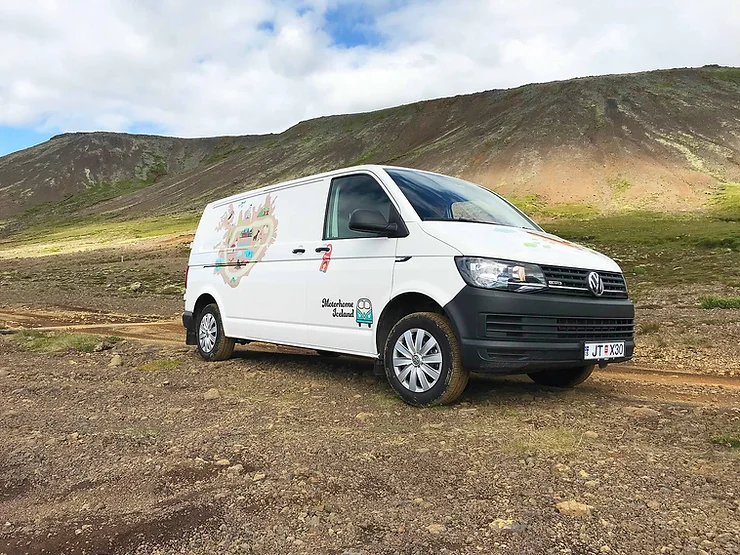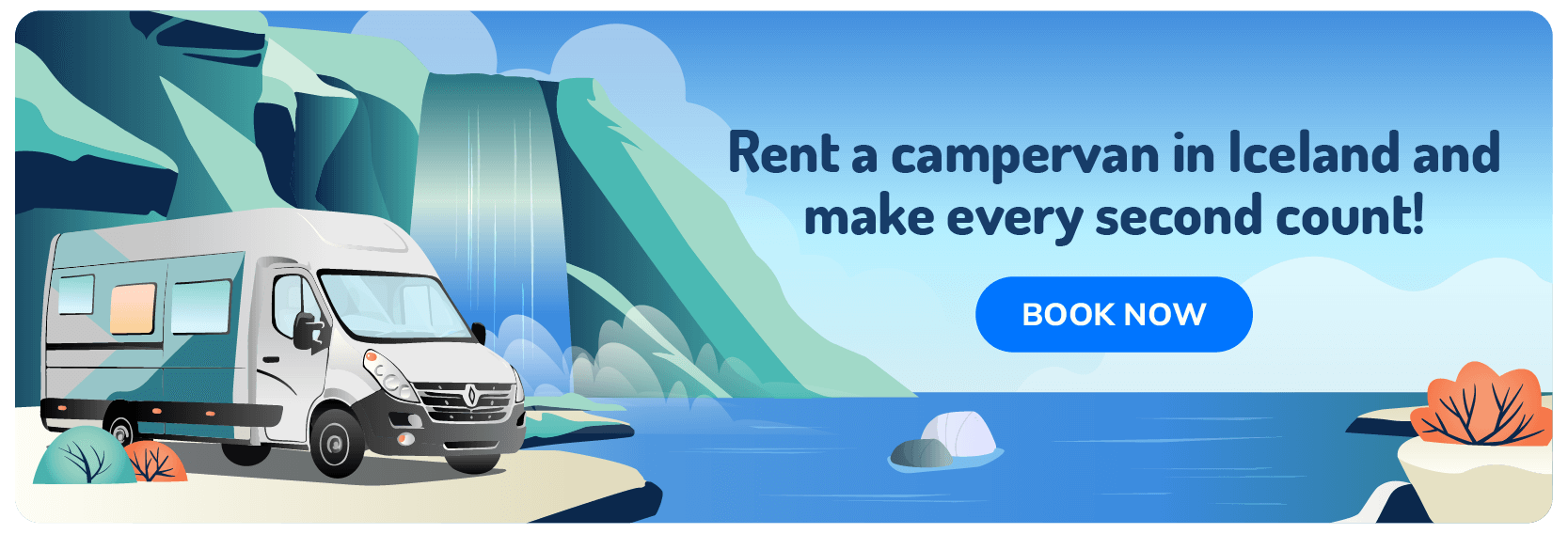If there’s one thing you need on your travel bucket list, it’s to cruise around Iceland in a campervan. Driving in Iceland in a camper offers an entirely different experience than the traditional road trip and promises to be a truly unforgettable journey. But for those who have not taken on a road trip in a campervan before or when it will be their first time driving in Iceland, it’s natural to feel a bit apprehensive; it is the unknown, after all.
Well, not after reading this article. We’ve purposefully created this comprehensive guide to address any confusion or concerns and provide you all the information you’ll need to rent the right campervan for you, navigate our roads, and enjoy a once-in-a-lifetime trip. So, let’s get to it!
What to Know Before Driving in Iceland
First, there are a few basics we need to sort out before you can even entertain road-tripping through Iceland in a campervan.
Do You Need an International Driving License?
You don’t need an international driving license to rent a campervan in Iceland as long as it adheres to the following requirements:
- It’s in a language that can be understood in Iceland (this tends to be any language using Latin characters, such as English).
- It includes a photo of the person the license is made out to (and obviously in whose possession it is).
- The license is valid according to the dates stipulated on it.
If the license is in a language using a different alphabet, such as Chinese or Arabic, that’s not readily understood in Iceland, you’ll need to have an international driver’s license along with the driver’s license from your country of origin. If you’re still unsure about whether you need an international driver’s license, you can just give the rental agent a call, and they’ll be happy to provide you with their requirements.
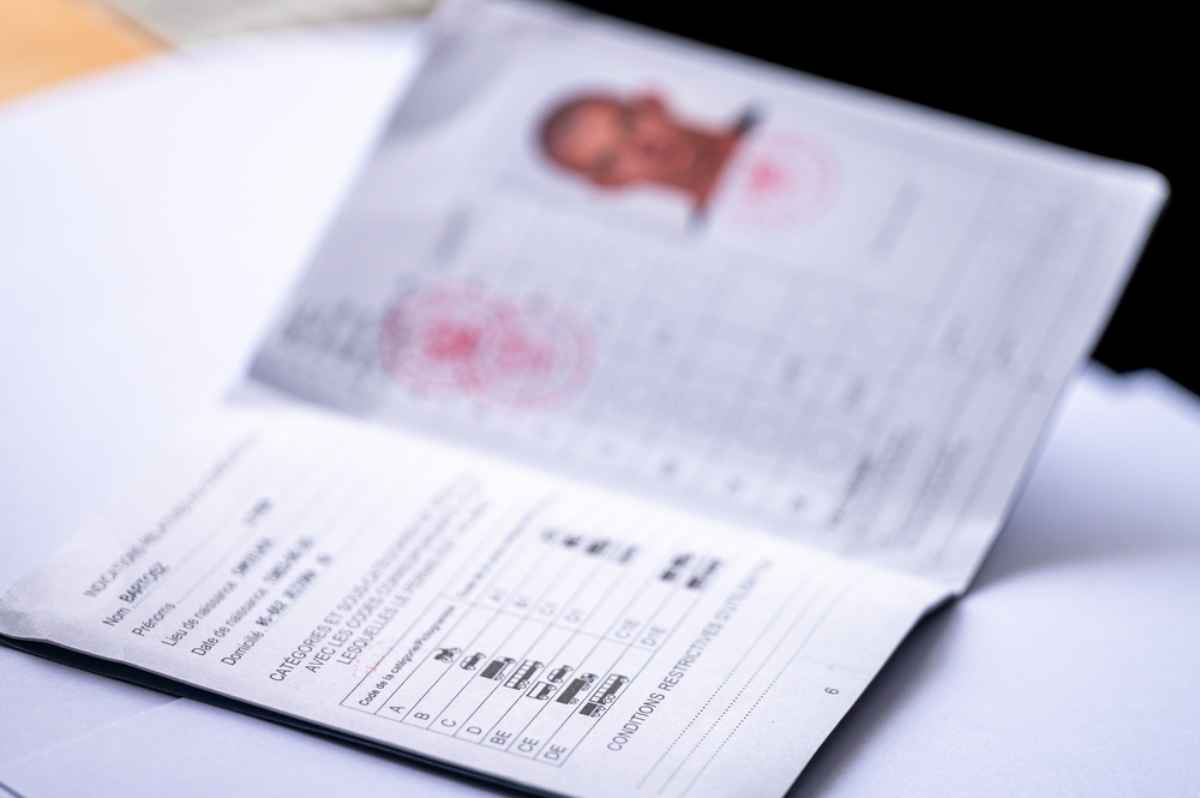
Age and License Requirements for Camper Rentals
This is crucial information since it may differ from what you’re used to back home. To rent a campervan in Iceland, you must be at least 20 years of age and have had your license for at least 12 months.
For the larger or 4x4 models, the age requirement usually gets pushed to 23/25 (depending on the rental agent). It’s also worth noting that if you’re under 25, you may be charged a slightly higher rental fee (to cover the statistically higher risk factor).
Understanding Icelandic Roads and Conditions
As you may have already guessed, you can expect very diverse and contrasting terrain in a country called the Land of Fire and Ice, and the same goes for our roads. Here’s what you need to know before hitting the road:
Which Side of the Road Do They Drive On in Iceland?
When it comes to which side to drive on in Iceland, we like to say “the right is right.” Not only does it tell visitors which side of the road to drive on in Iceland, but it’s catchy enough for them never to forget. For many EU visitors this is good news. However, to visitors from other countries such as the UK, Iceland’s driving side can become both a mental and physical challenge.
This is because these visitors are used to driving on the left, and the mental gymnastics it takes to override muscle memory and drive on the right side of the road in Iceland, is highly underestimated. But don’t fret; it only takes a couple of days driving on the right side in Iceland to get the hang of it, and soon you’ll be cruising!
Paved vs. Gravel Roads – What to Expect
Iceland has many paved and well-maintained roads, such as the Ring Road (aka Route 1), essentially our main road around the island logistically. Because this road connects most cities and towns on the island, it’s also a favorite among road-trippers. Other paved roads also include those in urban and residential areas.
These paved roads remain accessible all throughout the year, and because they are so well-maintained, they are less of a challenge to drive during our colder months. These are also the roads you can take on irrespective of the type of campervan you have (from the smallest 2-wheel drive to the biggest beast of a 4x4).
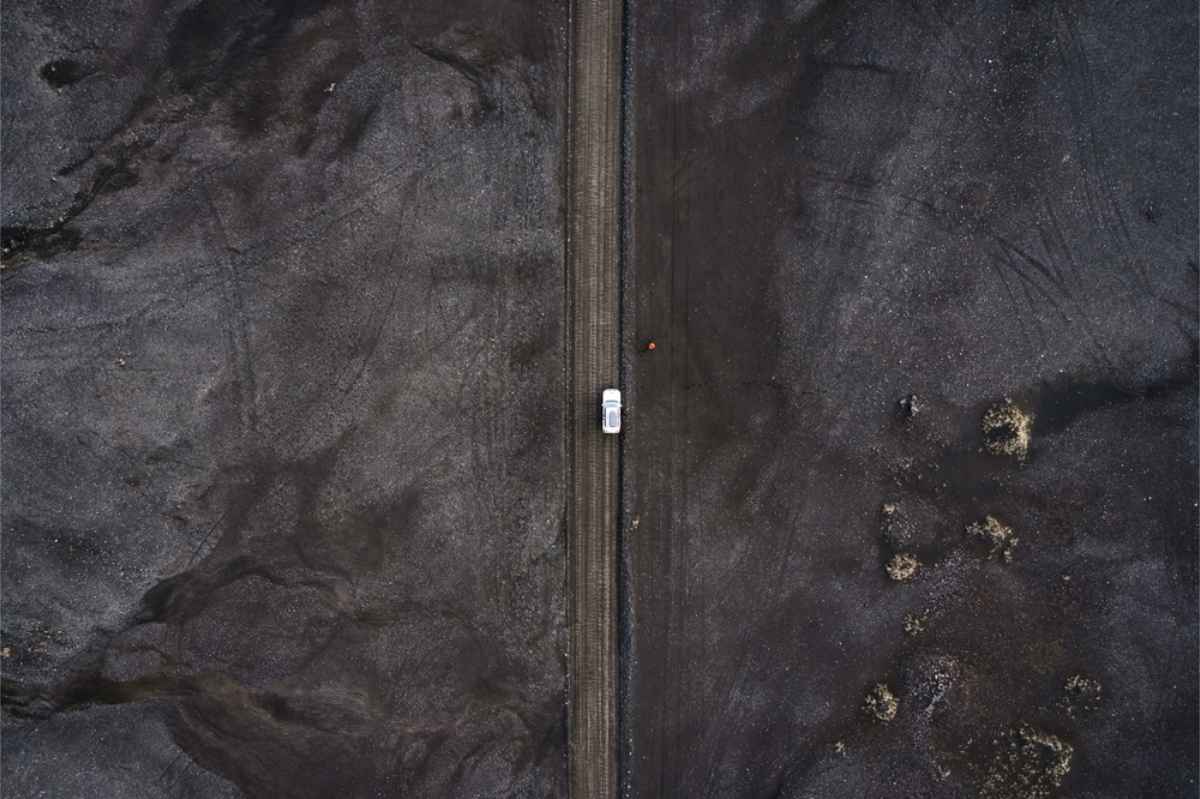
The moment you start taking little detours off these main roads, you’ll find that most are unpaved gravel roads. Most are still well-maintained, especially those leading to some of our famous attractions, so you’ll still manage with a 2-wheel drive as long as you drive with some caution.
But other gravel roads can be quite a challenge, with everything from potholes and obstacles to being extremely rocky and uneven and having to cross rivers or streams. For many of these roads, we’d recommend you rather get a 4x4 camper. If you are unsure whether your planned route contains any such roads, please ask your rental agent for some local insight.
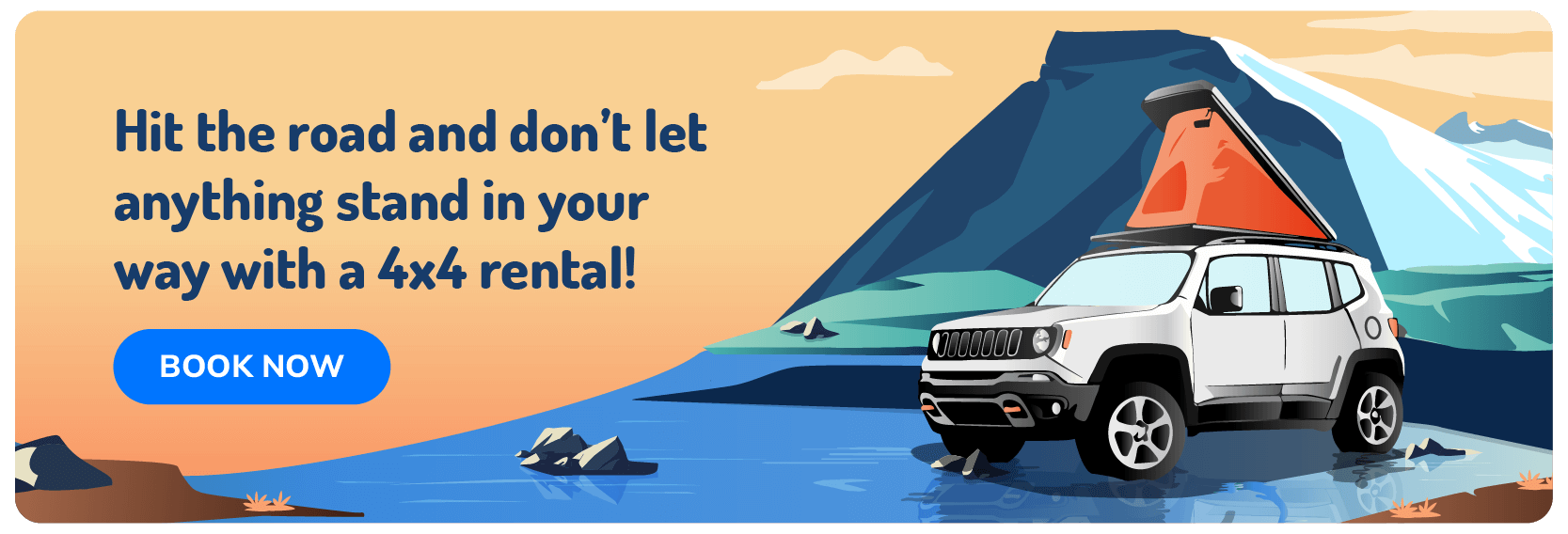
Driving the Ring Road in a Camper: Practical Information and Tips
Because the Ring Road is a paved and well-maintained road, you’ll be able to do a Ring Road road trip in a 2-wheel drive camper. While the Ring Road remains open throughout the year, you will still need the standard winter gear such as snow tires when taking on the road during our colder months.
During the rest of the year, driving the route will be smooth sailing as long as you adhere to the rest of the tips mentioned in this article, such as keeping tabs on the weather and road conditions, familiarizing yourself with Icelandic road signs and adhering to road rules, not parking along the side of the road (or any other place that’s not a designated parking spot, for that matter), and so forth.
F-Roads: Can You Drive There with a Campervan?
The F-roads are essentially Iceland’s gravel roads on steroids. These roads are mostly found in the Highlands and a few in the Westfjords (some of the country’s most remote regions). As the name suggests, these guys can quickly be spotted on a map with the characteristic F marking the first letter of the road (for example, F208).
These roads are extremely challenging but are just as rewarding, offering spectacular scenery rarely seen by visitors. Because of the conditions of the F-roads, they can (by law!) only be driven with 4x4s. They are also closed annually throughout the colder months of the year, which means the best time to plan an exploration of the Highlands and the Westfjords would be during the summertime (when the F-roads are guaranteed to be open).
Since the F-roads are mountain roads, a few can get pretty narrow, so this won’t be the place for your monster motorhome (even if it’s 4x4); you’re bound to get stuck somewhere. More compact 4x4 campers with sufficient clearance are the key to a successful F-roads journey.
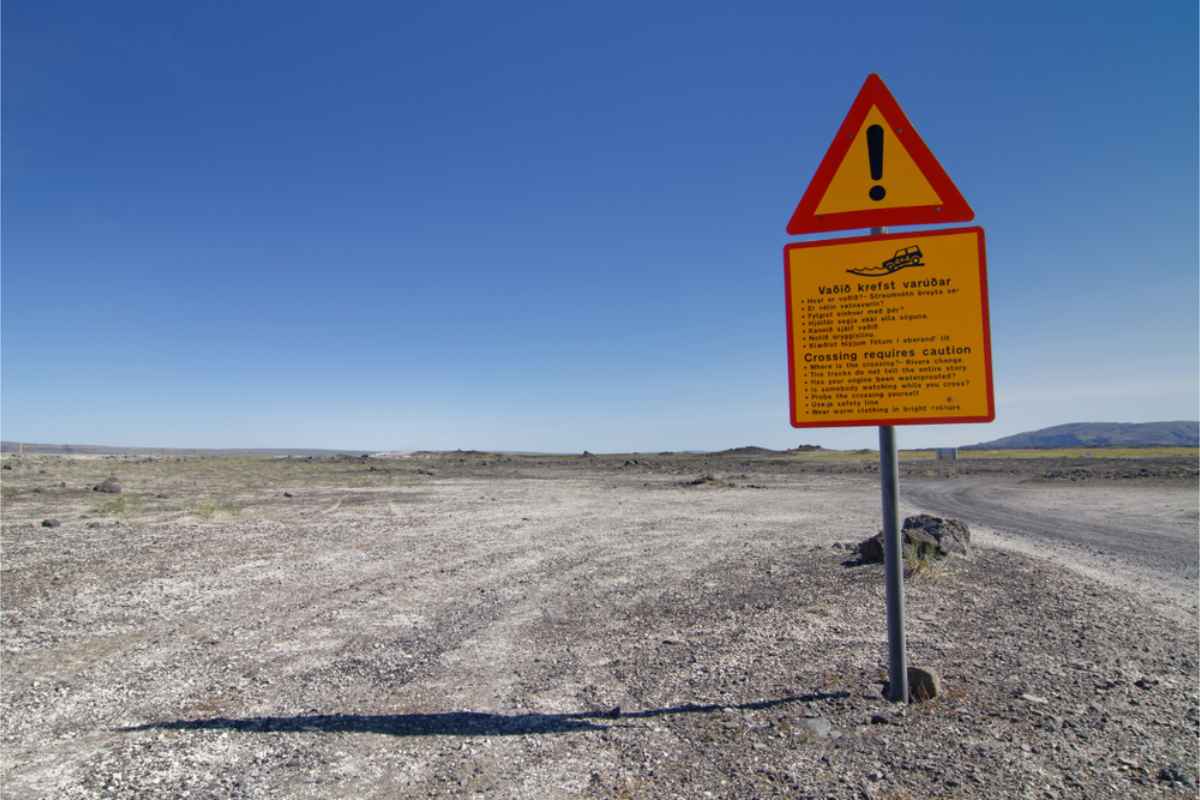
Safety Tips for Driving a Camper in Iceland
If this is your first time driving in a camper or your first time driving in Iceland, the following tips and advice will be very useful:
How to Check Road and Weather Conditions Before You Drive
Whether you’re planning on driving in Iceland during our colder months or not, you’ll need to keep a close eye on the weather. The weather in Iceland can be fickle at the best of times, so even though you might not get surprised by a blizzard mid-summer, the weather can change at the drop of a hat. After all, the local saying is, “You can experience all four seasons in a day in Iceland.”
So check out Vedur for any weather updates, especially before you plan on heading out. Also, keep an eye on Umferdin, where you’ll be kept up to date with what’s happening on the roads and whether there are any sudden road closures (due to weather or other unforeseen circumstances).
Winter Driving Tips for Camper Rentals
Driving in Iceland in winter is a different ballgame, requiring all sorts of extra gear, accessories, and precautions. So, if you’re planning on visiting the island between October and April, the following will be helpful:
- This period of the year (give or take a month, depending on the weather) is when winter tires are a legal must in Iceland. Even though most rental agents will take care of this on your behalf, be sure to inquire beforehand to err on the side of safety (and the right side of the law).
- When there is ice and snow on the roads, please drive with extra caution and keep a slow and steady pace to avoid having to suddenly brake. This is the best way to avoid losing your grip and skidding.
While many think this advice is reserved for our official winter season, we do get early starts to the winter, especially in the north, where you can experience early snowfall and extreme cold. You’ll also find that snow and ice can take quite a while to melt in spring, once again, especially in the northern parts of the island, so don’t get too cocky on the roads when arriving early in spring – remain vigilant.
- We already mentioned that the F-roads are kept closed throughout this time, but we also recommend avoiding other unpaved roads that are not extremely well-maintained (such as the off-roads to attractions). Instead, stick to the paved and well-maintained main roads (it’s always better to be safe than sorry).
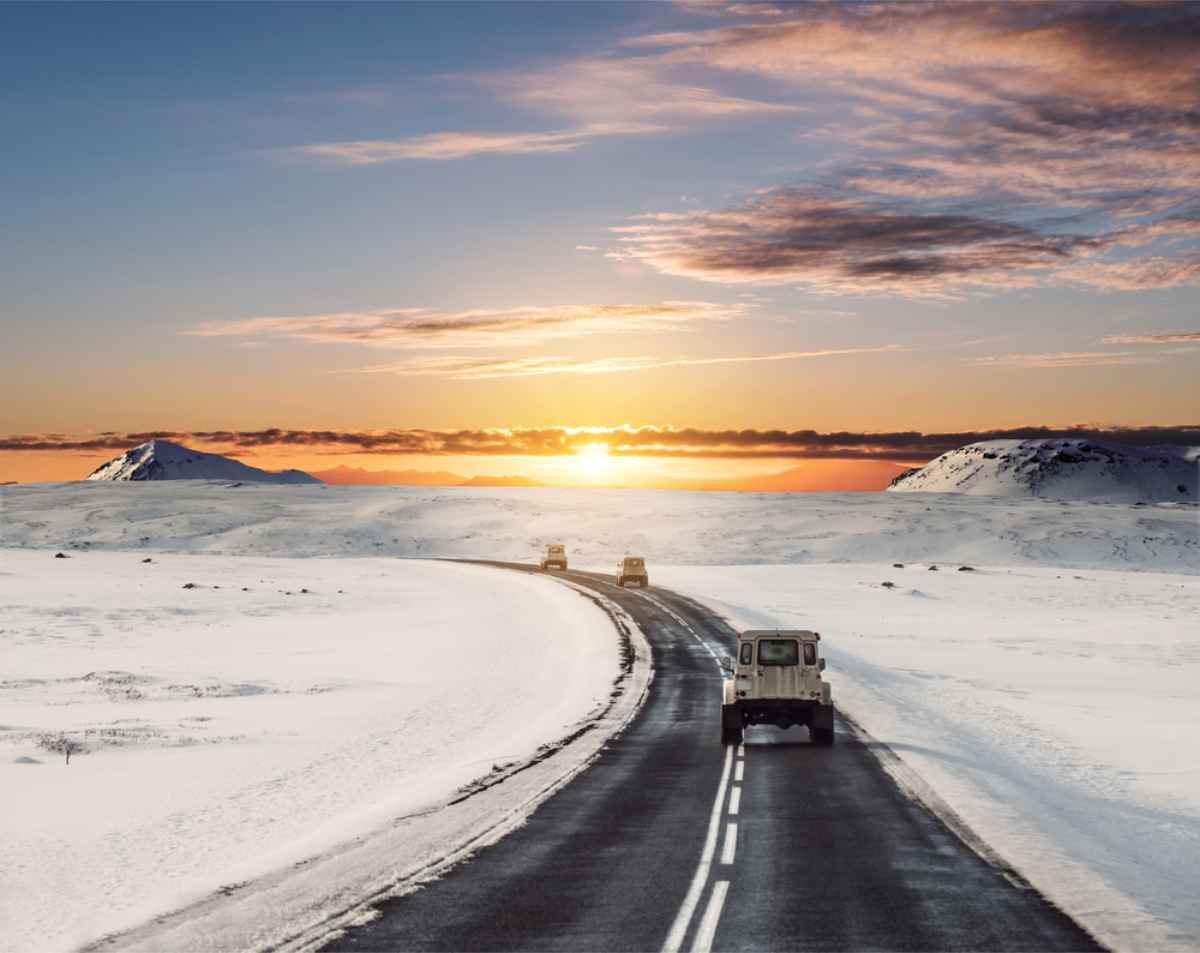
Hazardous Driving Situations: Animals, One-Lane Bridges & More
There are a few things here in Iceland that will impact your safety when driving in Iceland, and which you may not be used to back home. These include:
Animal Crossings
You’ll need to keep an eye out for all sorts of free-roaming animals, such as sheep, reindeer, and Icelandic Horses, when driving in Iceland. While these may be one-off occurrences throughout your travels on the island, September and early October is Rettir, when farmers gather their sheep before the winter, and you’ll often spot mass amounts being herded “home” from the mountains, often crossing the roads.
One-lane Bridges
These are pretty common around Iceland, with most having warning road signs when approaching the bridge. In these situations, the general rule of thumb is to yield to whoever is closest to the bridge (in other words, you give them the chance to cross the bridge first).
Blind Hills
With contrasting landscapes such as ours, you’ll find many mountains and valleys, which lead to having plenty of uphill and downhill roads. Sometimes, these uphill roads can get so steep that you’ll have very limited visibility when it comes to oncoming traffic. Whenever this happens, please drive with extra caution and please don’t try to overtake anyone.
Camper Rental Guide – Choosing the Right Vehicle
The key to any successful campervan road trip in Iceland is having the campervan that suits your needs and preferences best. So, let’s take a look at what you’ll need to consider:
2WD vs. 4WD Campers – Which One is Best for You?
Check if you’re likely to use a 2-wheel drive or a 4-wheel drive below:
|
2WD |
4WD |
|
Paved & well-maintained roads. |
Unpaved, gravel roads, including the F-roads. |
|
Shorter road trips. |
Longer road trips. |
|
If you’ll be sticking to the confines of the cities or towns. |
If you’re planning on exploring beyond the city borders, and you’re up for whatever adventure finds you along the way. |
|
You’re planning on visiting the island during the warmer months (between May and September). |
You’re planning on visiting the island during the colder months (between October and April). |
Insurance and Rental Agreements – What to Know
Insurance and a rental always go hand-in-hand, but here in Iceland, it may not be as straightforward as you’re used to. While some insurance is mandatory and often included in your rental package, there are a few additional extras that might be worth checking out, depending on your planned route and itinerary. These include:
- CDW (Collision Damage Waiver) – This lowers the excess payable for most damage claims, although gravel road incidents are often excluded (this depends on the specific insurance provider).
- Gravel Protection Insurance – This is exactly what it sounds like. This covers you for all the gravel road-related incidents standard insurance coverage doesn’t.
- Tire Insurance – This covers any damage to your tires, which is also often excluded from standard insurance. Highly recommended if you’re planning on traveling those unpaved roads.
- Sand and Ash Insurance – This covers you against any damage caused by sand and ash. In a country where volcanoes erupt all the time and the wind can turn the sand along our coastline into tiny weapons of mass destruction, we really recommend this add-on.
If you are unsure of anything pertaining to insurance in your rental agreement, or you’re feeling unsure of whether you’ve got sufficient insurance coverage for your specific route and itinerary, please chat with your rental agent so they can give you some professional and local guidance.

What to Check Before Leaving the Rental Station
For insurance and rental agency inspection purposes, please be sure to check the following before leaving the lot:
- Check for any wear and tear or accidental damage to the tires.
- Check that the headlights are working (these should be left on whether driving in the day or night).
- Check for any bumps or scrapes on the vehicle’s body and paintwork.
- Check for any visible damage to the rental’s undercarriage.
- Check whether all loose items, gear, and equipment stated in your rental agreement are actually there.
- Check all electrical devices and equipment included in your rental agreement.
Fuel, Parking & Practical Tips for Camper Travelers
Below is some practical info essential to know before you hit the road with your camper:
Where to Find Fuel Stations (and Where They’re Scarce)
You will find gas stations all over the country, but they tend to become few and far between in our more remote areas. So, please ensure you fuel up before leaving the more densely populated cities and towns. You also need to keep in mind that our gas prices are not the same everywhere – not even at the same brand of gas station.
So, you’ll need to do some research beforehand and plan to refuel where you’ll get the most bang for your buck. Most gas stations will allow you to pay with a credit card with a chip and a PIN (so inquire with your local bank if you’re unsure whether your credit card passes this criteria), a pre-paid card, or digital payment apps (although the latter is still fairly rare).
Parking Rules and Fees at Iceland’s Attractions
It is illegal to park on the side of the road or any other place that’s not a designated parking spot. This is not only for your safety but also to keep our environment safe. You will also not be allowed to overnight in parking spots unless it specifically states that it’s permitted.
Most of our attractions have designated parking lots, but please note that some will require you to pay a small parking fee. This fee can usually be paid on-site or online (via a website or an app).
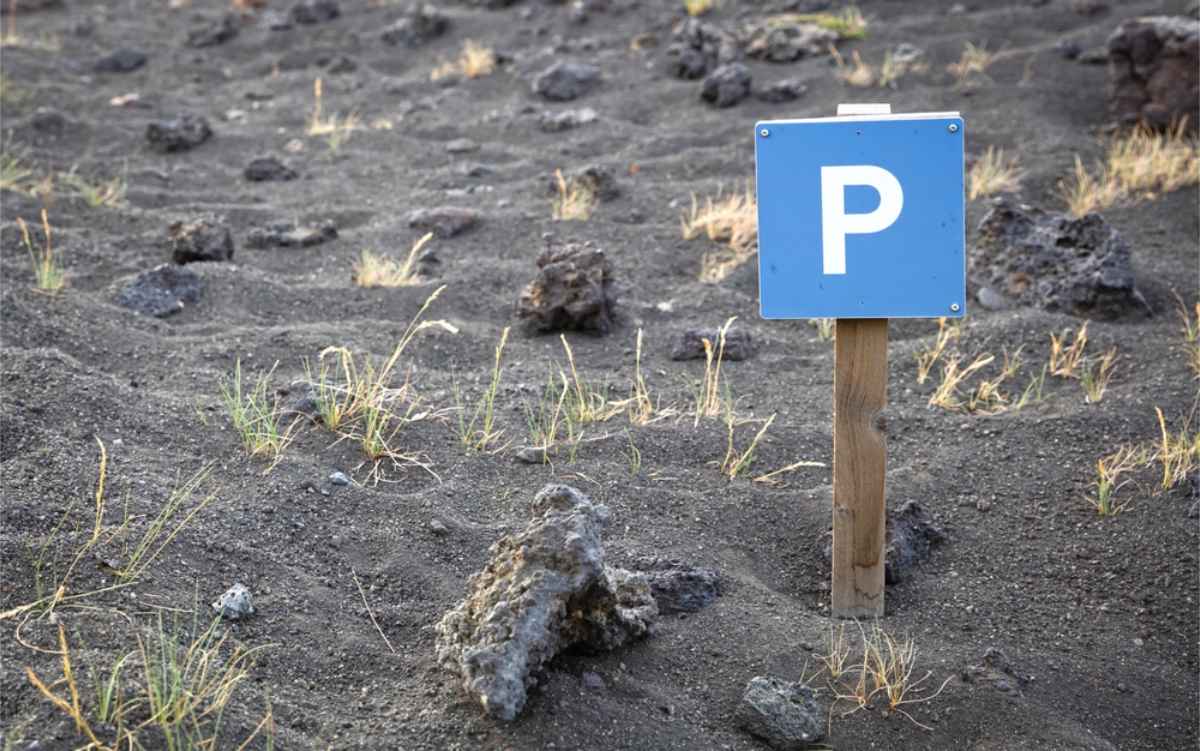
How to Avoid Fines and Stay Safe on the Road
Icelanders don’t look kindly on rule-breakers (especially not those endangering others or our environment). So, before you end up with a few angry locals and a fine that might require you to remortgage your house, try to keep the following driving rules in Iceland in mind:
- Always drive with your headlights on (here, it’s not just for you to see better, but also for others to see you better).
- Ensure that everyone in the vehicle is wearing a seatbelt if the vehicle starts moving.
- Never use your phone while driving, unless it’s via a Bluetooth, hands-free system.
- Always ensure you’re driving on the right side of the road (which, in Iceland, is the right side). This can take a while to get used to if you’re used to driving on the left back home.
- Adhere to Iceland’s speed limits (which, once again, may not be what you’re used to back home).
Final Tips for an Unforgettable Camper Road Trip in Iceland
In closing, we’d like to offer you these last few words of wisdom:
- A campervan road trip is an itinerary that should not be set in stone. The entire point is to be able to go and stay when and wherever you want to. So be flexible and leave some room in your itinerary for impromptu adventures. This will also help you when you hit an unexpected road closure or get surprised by some bad weather.
- Please don’t try to DIY your own “road less traveled,’ even if you have a 4x4. In a country filled with Puffin burrows, lava caves, rare flora, and underground hot springs, any such plans are bound to end badly – either for you or our sensitive ecosystem.
- In the same vein, please follow a leave-no-trace principle. This is not just in regards to littering, but also watching where you step (not trampling anything), and DEFINITELY not doing your bathroom business out in nature.
- Always keep your attention on the road. This might seem like a no-brainer, but once you hit those mountain roads with the breathtaking views over the fjords, you’ll understand why driving off a cliff is a very real possibility if you’re not careful.
- Give yourself time. It can be tempting to try and cram as much as possible into your trip itinerary. But this can put you under extreme (unnecessary!) pressure when driving in Iceland in a campervan – especially during the months when daylight hours may not be that many. Rather leave yourself some leeway in your itinerary than constantly feeling rushed to get to the next stop. That’s not having a unique adventure – that’s having a job.
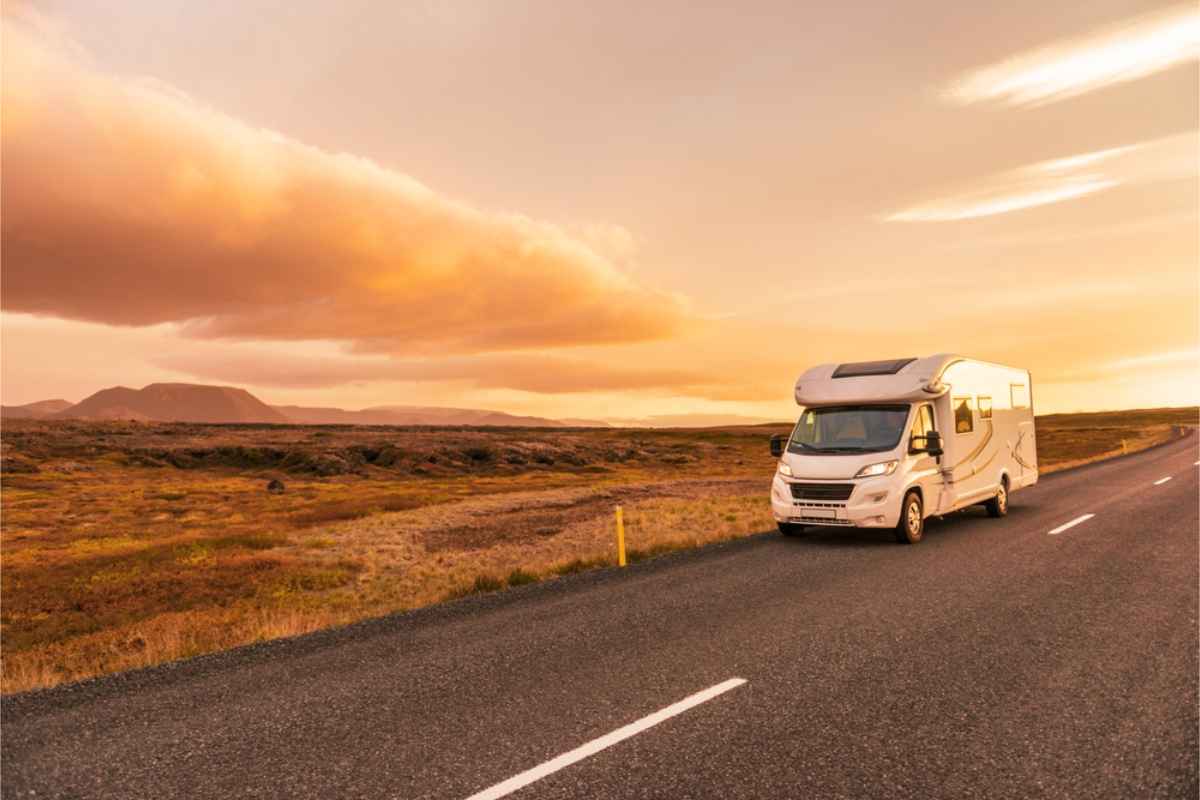
Plan, Prep, & Ride!
Armed with all the knowledge you need to go driving in Iceland in a campervan, it’s time to start planning your ultimate adventure. Put all the knowledge to good use, plan out that itinerary, rent your camper, and head out on the road trip of a lifetime!
